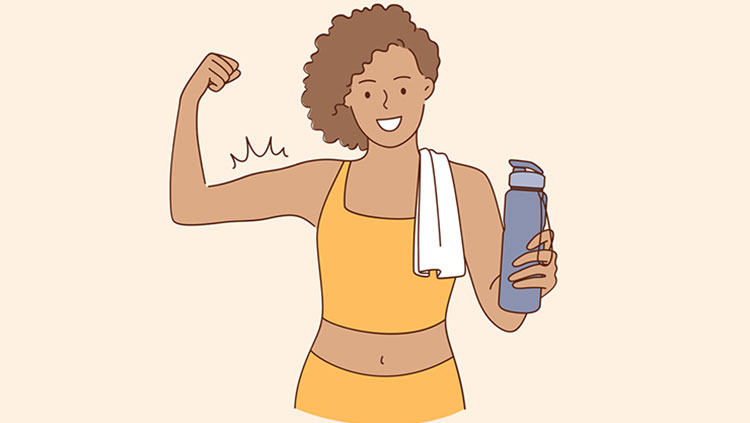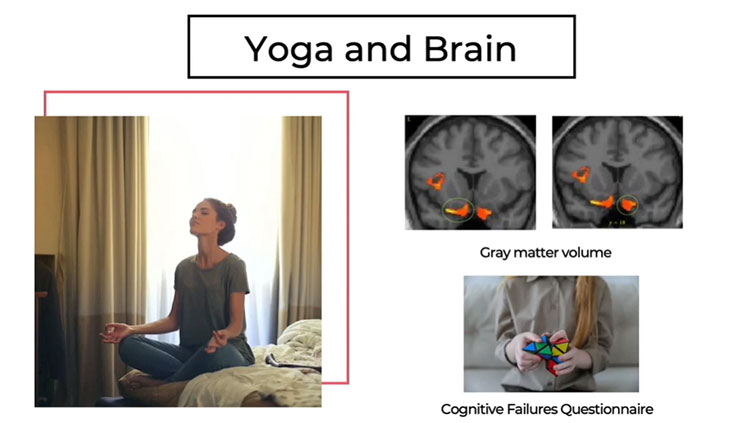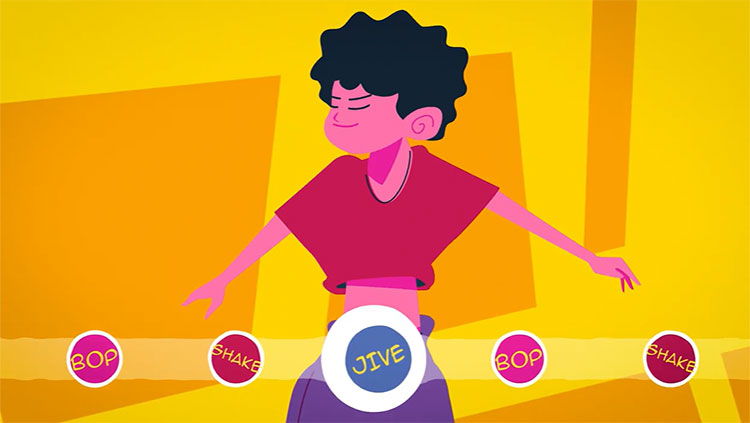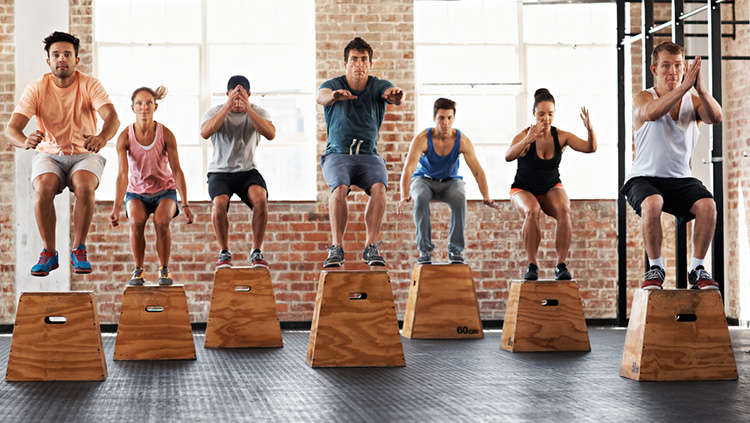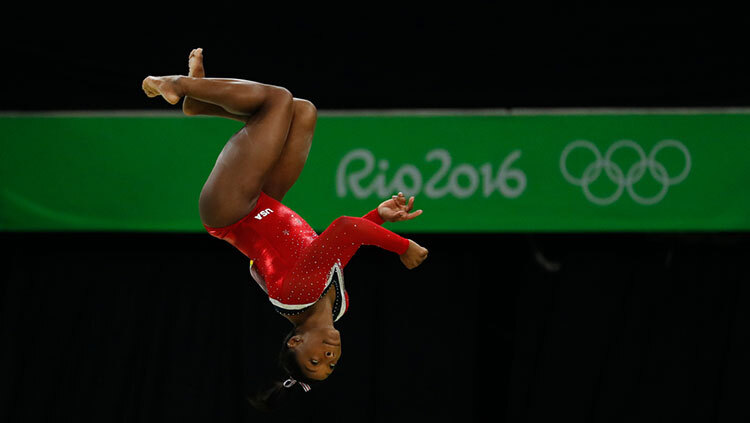High-Intensity Interval Training Can Affect Brain Function for the Better
- Published25 Oct 2022
- Author James Anderson
- Source BrainFacts/SfN

Pushing hard, you hammer out 30 seconds pedaling on your bike. Then, you rest. You recover, briefly. Before long, you’re back at it.
First popularized in the mid-20th century, high-intensity interval training (HIIT) combines several rounds of vigorous exertion — elevating heart rates to at least 80 percent of a person’s max, followed by short periods of rest or lower intensity activity. It enables the exerciser to get in an aerobic and/or strength training workout in about half the time of a traditional workout without sacrificing benefits. And that’s not all. HIIT appears to enhance executive function — processes of top-down, goal-directed cognitive control — in both young people and adults.
“A long history and a pretty sizable literature [has shown] that people who are more active, do better on a variety of cognitive tasks have essentially better cognitive function than people who are inactive,” according to Steven Petruzzello, professor of kinesiology at the University of Illinois at Urbana-Champaign. “And if you take the inactive person and increase their level of activity, you improve their cognitive function.”
The Youthful Brain on HIIT
In children and teens, higher levels of aerobic fitness are associated with better memory. “If we think about an adolescent who is active in either a high intensity sport, or in physical education and has gone through maybe Tabata or a HIIT circuit that is part of their physical education curriculum, immediately they have increased the saturation of O2 in their brain,” explained Darla Castelli, director of the Kinetic Kidz Lab and professor of kinesiology at the University of Texas at Austin. Castelli added, “That oxygen level will remain elevated for a period of time, usually 60 minutes,” depending on the individual and how fit they are, producing a window within which someone is primed to learn.
Physical activity helps ensure the brain receives the steady supply of oxygen (O2) it needs to signal properly. Memory problems are associated with reduced blood and oxygen flow to the hippocampus — the brain region associated with learning and memory. Increasing O2 flow to the region improves its function, Castelli noted.
A 2020 review explored HIIT’s role on youth cognitive health. The researchers from Boston and Australia analyzed 22 studies across various geographic regions and physical activity modalities — 11 measuring HIIT’s effects on the executive function for individuals ages 5 to 18. The research team found HIIT efficiently produces small to moderate improvements in cognitive function among children.
Giving the Adult Brain a HIIT
HIIT can benefit people’s brains into adulthood as well.
An international team of scientists focused on 24 studies in a 2021 review looking at the relationship between acute HIIT and executive function across a range of age groups. The researchers focused on how HIIT affected three indicators of executive function — inhibition, working memory, and cognitive flexibility.
Among people ages 19-40, acute HIIT, defined as 11 minutes to a half an hour workout at maximal and submaximal intensities, consistently resulted in positive effects for inhibition — the ability to restrain automatic responses during cognitive processing, and updating — the capacity to store and process temporary information. The researchers didn’t see benefits from HIIT for cognitive flexibility (shifting) — the ability to perceive alternative explanations for events and to modify responses while superseding automatic behaviors.
HIIT Through Aging
And HIIT’s improvements on executive function can extend past middle age. A 2020 study produced promising results on HIIT training and executive function for people in their sixties and seventies.
Canadian and French researchers compared three exercise groups. One completed six weeks of 40-minute HIIT workouts, three days per week, with 15-second intervals of max output followed by 15 seconds of passive recovery. Another engaged in 30 to 39 minutes of moderate-intensity continuous cycling sessions. A third conducted eight exercises of resistance training based on the American College of Sports Medicine Guidelines for older adults.
Researchers found HIIT workouts augmented measures of subjects’ cardiorespiratory fitness and cognitive flexibility compared to the cycling and resistance training groups. What’s more, HIIT improved older adults’ reaction times in the switching condition of the Stroop Task: a cognitive test requiring participants to name the font color of a word even when the word itself is different than the font color.
“What's cool about HIIT — it's relative to the individual,” Castelli said. “So if you can do 20, and I can only do 10, by age differential, it's still relative to me that it's high intensity, and I think that's the big attractor here, right?” The notion of what counts as “high-intensity” reflects each individual’s personal abilities and fitness, making HIIT an appealing mode of exercise for people at different stages of life, across different physical conditions.
CONTENT PROVIDED BY
BrainFacts/SfN
References
Ai, J.Y., Chen, F.T., Hsieh, S.S., Kao, S.C., Chen, A.G., Hung, T.M., & Chang, Y.K. (2021). The Effect of Acute High-Intensity Interval Training on Executive Function: A Systematic Review. International journal of environmental research and public health, 18(7), 3593. https://www.mdpi.com/1660-4601/18/7/3593
Billat, L. V. (2001[2012]). Interval Training for Performance: A Scientific and Empirical Practice. Sports Medicine, 31(1), 13-31. https://link.springer.com/article/10.2165/00007256-200131010-00002
Chaddock, L., Erickson, K. I., Prakash, R. S., Kim, J. S., Voss, M. W., VanPatter, M., Pontifex, M.B., Raine, L.B., Konkel, A., Hillman, C.H., Cohen, N.J., & Kramer, A.F. (2010). Brain Research, 1358, 172-183. https://www.sciencedirect.com/science/article/abs/pii/S0006899310018317?via%3Dihub
Fragala, M. S., Cadore, E. L., Dorgo, S., Izquierdo, M., Kraemer, W. J., Peterson, M. D., & Ryan, E. D. (2019). Resistance Training for Older Adults: Position Statement From the National Strength and Conditioning Association. Journal of strength and conditioning research, 33(8), 2019–2052. https://doi.org/10.1519/JSC.0000000000003230
Gjellesvik, T. I., Becker, F., Tjønna, A. E., Indredavik, B., Lundgaard, E., Solbakken, H., Brurock, B., Tørhaug, T., Lydersen, S., & Askim, T. (2021). Effects of high-intensity interval training after stroke (the HIIT stroke study) on physical and cognitive function: A multicenter randomized controlled trial. Archives of Physical Medicine and Rehabilitation, 102(9), 1683-1691. https://www.archives-pmr.org/article/S0003-9993(21)00436-6/fulltext
HIIT (High Intensity Interval Training). (n.d.). Harvard T.H. Chan School of Public Health. https://www.hsph.harvard.edu/nutritionsource/high-intensity-interval-training/
Kingsley, C. (2022). Why Does The Brain Need Oxygen? Lung Institute. https://lunginstitute.com/why-does-the-brain-need-oxygen/
Leahy, A.A., Mavilidi, M.F., Smith, J.J., Hillman, C.H., Eather, N., Barker, D., & Lubans, D.R. (2020). Review of High-Intensity Interval Training for Cognitive and Mental Health in Youth. Medicine & Science in Sports & Exercise, 52(10), 2224-2234. https://journals.lww.com/acsm-msse/Fulltext/2020/10000/Review_of_High_Intensity_Interval_Training_for.19.aspx
Learning and Memory. (2013). University of New England Center for Excellence in the Neurosciences. https://www.brainfacts.org/for-educators/for-the-classroom/2013/learning-and-memory
Marvin, K. (2012). Trail Making Test. Stroke Engine. https://strokengine.ca/en/assessments/trail-making-test-tmt/
Mekari, S., Neyedli, H. F., Fraser, S., O’Brien, M. W., Martins, R., Evans, K., Earle, M., Aucoin, R., Chiekwe, J., Hollohan, Q., Kimmerly, D.S., & Dupuy, O. (2020). High-intensity interval training improves cognitive flexibility in older adults. Brain sciences, 10(11), 796. https://www.mdpi.com/2076-3425/10/11/796
Signorile, J. F. (2013). Resistance training for older adults: Targeting muscular strength, power, and endurance. ACSM's Health & Fitness Journal, 17(5), 24-32. https://journals.lww.com/acsm-healthfitness/Fulltext/2013/09000/Resistance_Training_for_Older_Adults__Targeting.7.aspx
What to Read Next
Also In Movement
Trending
Popular articles on BrainFacts.org



